Rococo style in the interior

Modernity is good in that each owner can furnish his own home to his liking, but for some reason most people resort to banal solutions, and almost all apartments look the same. If you look for an option from among the bright, beautiful and recognizable, but at the same time not trivial, then the French Rococo style, perhaps, will be one of the best options.
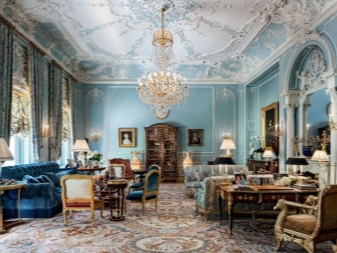
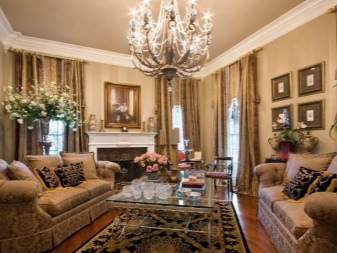
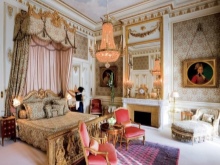
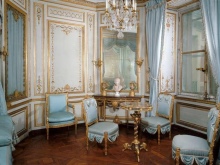
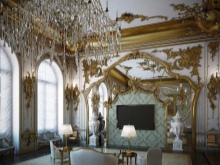
What it is?
In the second half of the 17th and early 18th centuries, France was ruled by the famous King Louis XIV, who made the baroque famous throughout the world - one of the most elaborate and cumbersome aristocratic styles, embodied in its design all the chic and richness of the monarchy. During his reign, the "sun king", as his contemporaries called him, preferred to keep all the nobility close to him in the royal palace of Versailles, but his descendants were not so principled and sent the nobles home. The latter, apparently, experienced the unhealthy pressure of the overly luxurious residential interior of the French royal palace, but did not have enough money to replicate such luxury, so they came up with their own style - Rococo.
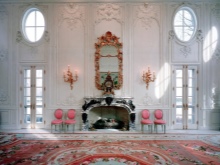
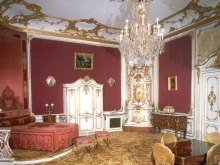
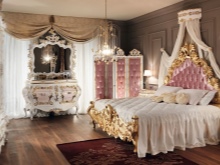
The features of Rococo are easiest to describe as follows - this is also a style not for poor people, but already without excessive palace arrogance. For all the splendor of the era of Louis XIV, it should be recognized that the king was rich, but did not have aesthetic taste, while Rococo was characterized by such signs as lightness, refined elegance and an increased emphasis on naturalness of forms and curves.
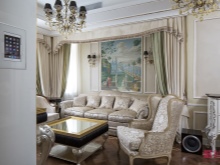
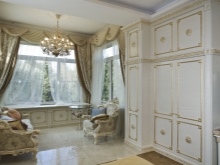

A modern rococo room, like a classic one, is full of curls and in this it even has something in common with the Chinese style. The interior, as in the case of the baroque, does not have to look cheap, but this effect is achieved rather through the use of decorations. There is no inappropriate flashy brightness in everything - on the contrary, the gamut of pastel colors is used more actively. For all the beauty and grace, it is completely unacceptable to forget about comfort.
The design may contain stories from mythology.
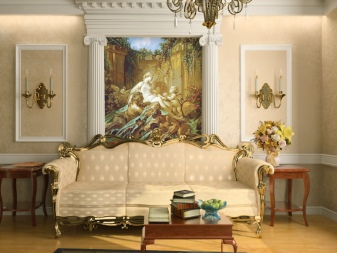

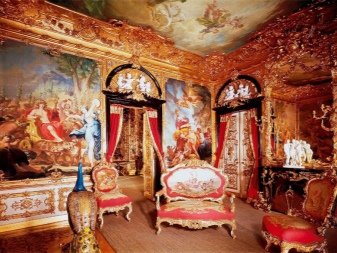
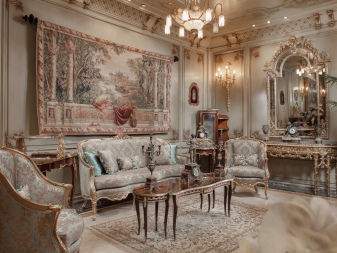
Registration
Most people have no idea how to renovate an apartment in the style of the 18th century aristocracy, and yet it is possible. Moreover, correctly selected modern materials allow you to significantly save on finishing, which will still look just as interesting and rich, but in fact it will cost the owner of the living space relatively inexpensive.
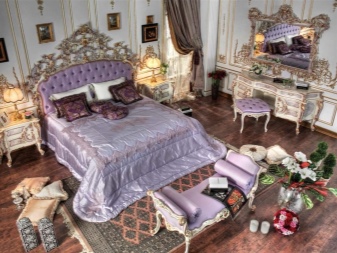

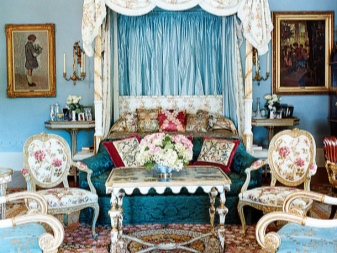
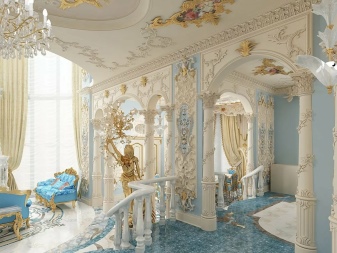
Sten
Perhaps, it depends on whether it is possible to properly decorate the walls, whether the interior in the Rococo style will succeed. The fact is that you can't get off with simple wallpaper here, since one of the main principles of Rococo is the relief of the finish, the abundance of protruding curls and patterns of complex shapes.
Professional designers usually advise to conditionally divide the walls into several zones, each of which will be filled with its own kind of decor.
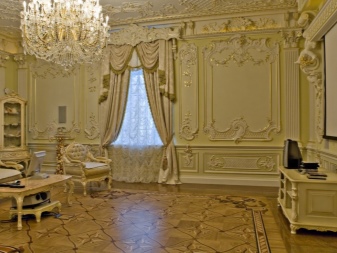
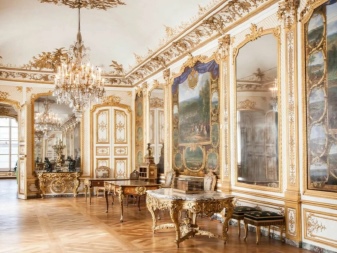
Nowadays, they are very actively using a technique that somewhat "makes the interior cheaper", but is almost the only available solution. The bottom line is to still paste over the walls with wallpaper, and quite simple - without any special patterns, in pastel colors, it is possible with a noticeable relief. In the upper part of such a wall, purchased stucco moldings are glued (less often they perform it fully) - and the design is ready.
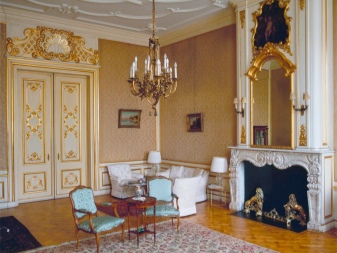
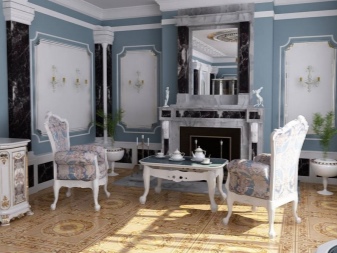
Alternatively, you can also consider wall panels, both wood and plastic, as long as they are carved and give a sense of aristocracy and exclusivity. They are usually made white or in shades close to this color, and on top are decorated with mirrors and imitation of golden thread.
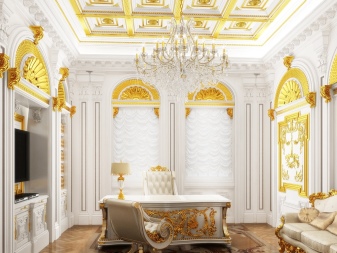
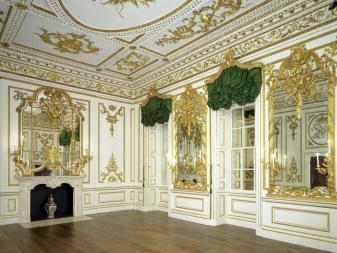
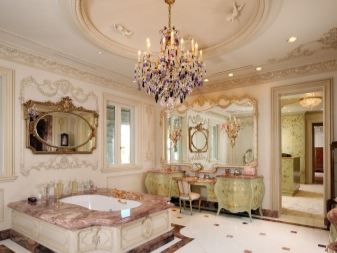

Ceiling
Although the Rococo style in some sense should look “simpler” than its “older brother” Baroque, one should not forget that it is still an aristocratic style - it was inherent in the dwellings of the nobility, and therefore cannot look very poor. For this reason, when decorating the ceiling, do not forget that you are renovating a palace - even if not a royal one.
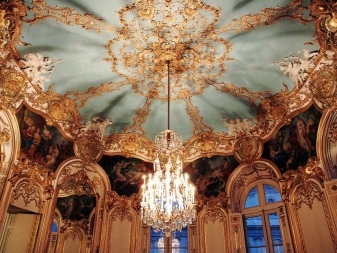
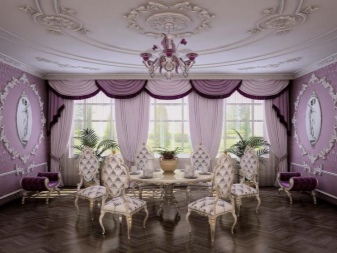
Naturally, there can be no question of any flat solutions - in the rich houses of the past, the ceiling was a kind of work of art with rounded shapes. Nowadays, it is easier and cheaper not to tinker with expensive plastering work, but to make outlines and curls from good drywall.
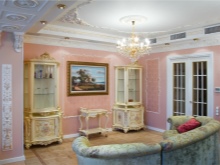
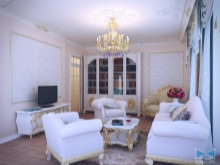

But the ceiling design does not end there either - it is necessary to imitate stucco molding and painting, which are often called decisive for Rococo in general. If the bathroom in this sense can still be ignored, then in the living room such elements of luxury should be mandatory, and in the bedrooms and hallway - desirable. Stucco molding can be bought in the form of baguettes, but painting is better to order.
If you have enough funds, stucco molding even in an ordinary apartment will also be appropriate.

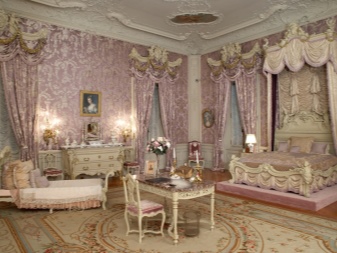
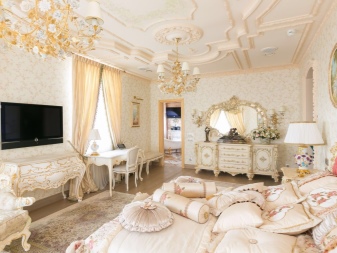

Paul
Whereas Rococo walls and ceilings display a modest luxury compared to royal opulence, the floor has received noticeably less attention in the sense that it serves more practical functions than decorative ones. It means that for flooring, durability and solidity will be the primary factors, but it should not attract the eye.


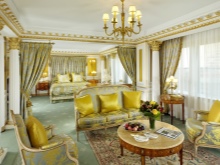
There are not so many options for materials that meet these requests. In a private house, you can use noble marble - this stone will allow you never to think about renovation again, while it looks expensive and fits perfectly into the overall concept. In an apartment, it is much more appropriate to choose a wooden floor - only it is better not to resort to imitations, but to spend money on real wood floors.
It is better, of course, that it was a parquet made of precious woods, but as an alternative any other parquet will do, as long as it is golden in color - it seems more expensive. Patterns on such a surface are possible, but not required, and they should be pretty simple anyway.
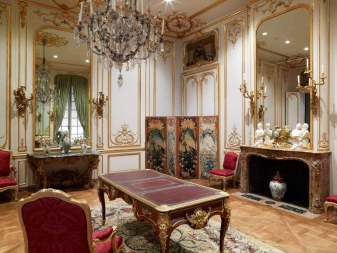
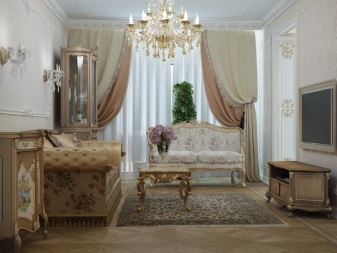
For all the luxury and aesthetics, an ordinary wooden floor, not to mention marble, gives off cold, and rococo, as we remember, is not only about aesthetics, but also about convenience. This is not necessary for the living room and most other rooms, but the bedroom should be cozy, and this effect is achieved through the use of thick soft carpets with fluffy pile. - those that the nobles would not be ashamed of.
Best of all, a full-fledged tapestry will fit into the style, if the emphasis is only on patterns, then focus on unobtrusive oriental symbolism - at the time of the invention of Rococo, the carpet industry was concentrated mainly in the Muslim world.
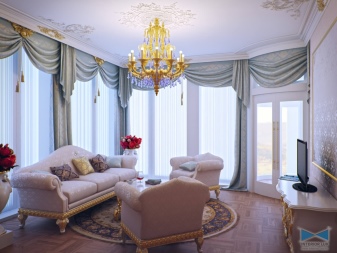
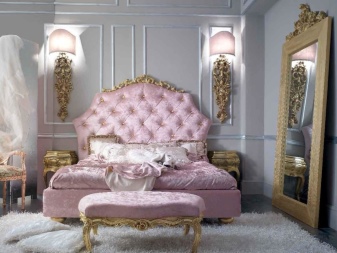


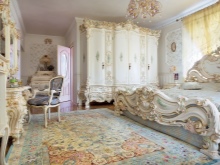
Selection of furniture
In order for the room to fully comply with the Rococo style, it is not enough to complete the appropriate finishing - you also need to take care that the furniture fully fits into the concept. The chosen style does not accept flat surfaces, neither on the ceiling nor on the walls. - it would be strange if this rule did not apply to furniture, because most modern wardrobes and other interior items will not fit into it in any way.
Of course, any modern materials are also unacceptable - only the good old classics. That is why the choice falls on wooden furniture decorated with ornate carvings, it is even better if it is complemented by gilding. To make the furnishings look as rich as possible, the wood must be bleached.
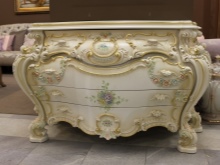
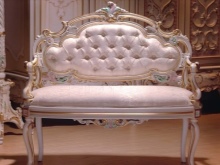
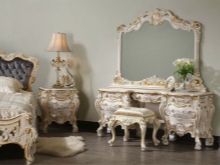
Rococo style does not recognize straightness so much that even the legs of the furniture must be curved.
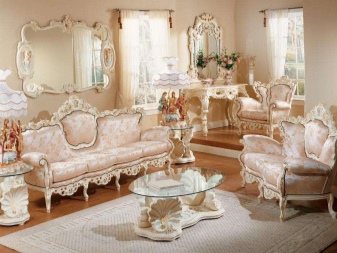

For a modern apartment, the most difficult moment in a la rococo decoration is the arrangement of a fireplace. Of course, in building supermarkets today it is not a problem to find an eco-friendly fireplace that does not have a fire, and therefore it is allowed for installation in a multi-storey building. However, it is necessary to find a model that adequately fits into the atmosphere of luxury, for example, decorated with a corporate ornament with a relief.
In addition, neither the guests nor the hosts should get the feeling of a fake, so you need to look for exactly that fireplace, in which the fire looks 100% believable. It is necessary, of course, to place such an accessory in the living room.


Among other things, you should also take into account the difference in the principles of furnishing. Nowadays, much attention is paid to the opportunity to relax in a horizontal (or close to it) position - all furniture from the category of sofas and armchairs is made upholstered for this, with backs and armrests.
At the time of the wide spread of Rococo, it was not accepted to fully recline during the day, therefore, various canapes, reclining couches with a raised headboard and increased (by our standards) rigidity were more in demand. If you want the interior to correspond to the best ideas about Rococo, it is also advisable to observe this norm.
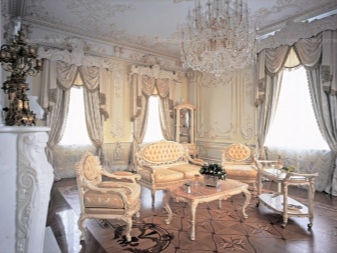

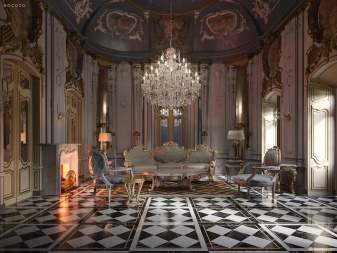
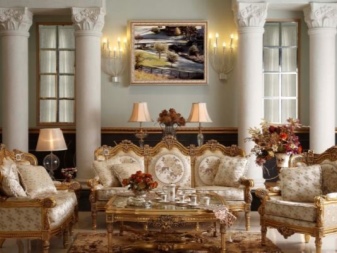
Color palette and patterns
The range of shades of the Rococo style is defined quite clearly - its contours were outlined more than 200 years ago and have remained unchanged since then. The emphasis is on sophistication, but at the same time always in light shades - both to enhance the mood and to improve the illumination of the premises. Rococo synonyms are sensuality, youth, femininity and romanticism. Therefore, there are no heavy tones here - all the design is selected strictly in soft shades to make the owner of the room truly happy and peaceful, because he is at home.



According to the above logic the most typical color for rococo is white, however, do not think that this style is so monotonous - the rich people of past centuries also wanted to be at least a little different from each other. Due to this, other similar colors have found wide application in interiors, among which, for example, light blue, beige, pale pink, light green and pistachio.
With this approach, different rooms do not merge, each one leaves its own impression without getting out of the general style.
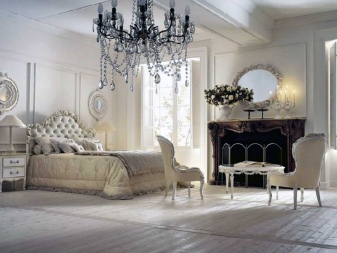

As for the painting, the requirements for it in terms of color are even less stringent, and in most cases it is noticeably darker than the rest of the interior. For her, gold was often used, which looks equally good with almost any other tones and very favorably emphasizes light shades. Theoretically, painting can be of any dark color, but at the same time it must be remembered that it must remain thin, not put pressure on a person.

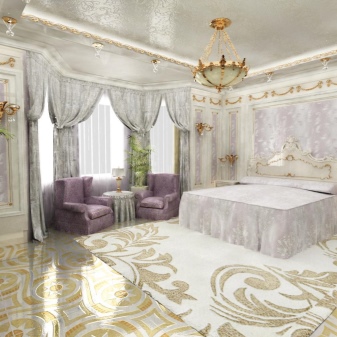
As a bright accent in the interior, woven elements were almost always used, be it curtains or a canopy. Textiles could remain beige, but almost never were white. But he was often deliberately chosen more catchy, for example, light purple, unobtrusive blue, deep coral.

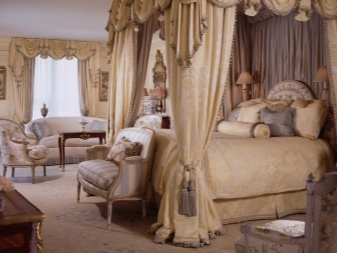
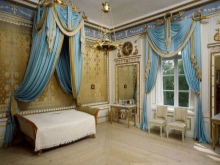

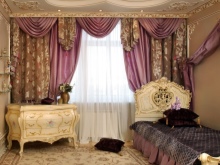
Lighting options
In the 18th century, there were problems with electric lighting - it simply did not exist yet, but today it is actively used and has practically no alternatives. In this case, the designer will have to use electrical appliances for lighting, but select them in such a way that they fully fit into the interior and do not create disharmony.
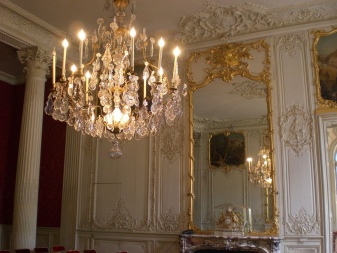

Since Rococo is a style for wealthy people, and we even make the ceiling figured and with stucco molding, then it is all the more impossible to save on chandeliers. The choice of the owner of the premises should fall on the most expensive and luxurious samples - savings are completely inappropriate here. Today, there are chandeliers whose bulbs imitate good old candles, at the same time the frame of the lighting fixture itself is made ornate and refined. This is exactly the solution that will fit into the design unconditionally.
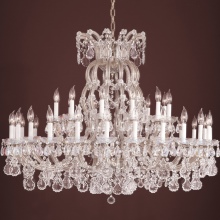
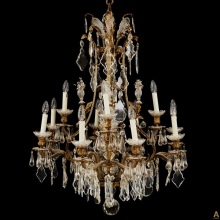
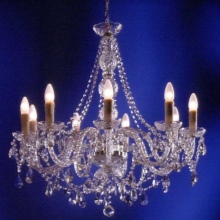
In past centuries, the ceilings in wealthy houses were quite high, and candles, even in large numbers, could not provide enough light to fully illuminate the entire room from a long distance. For this reason, ancient interiors could not be limited to ceiling chandeliers alone - they also had to use wall sconces and table candelabra. The location of such lighting points was thought out in such a way as to provide lighting where there is a maximum need for it. - next to mirrors, near coffee tables, and so on.
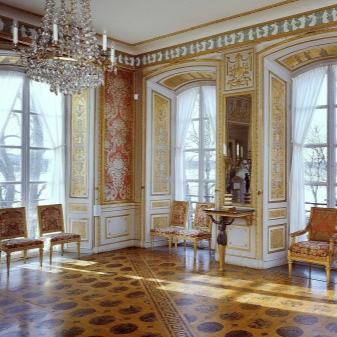
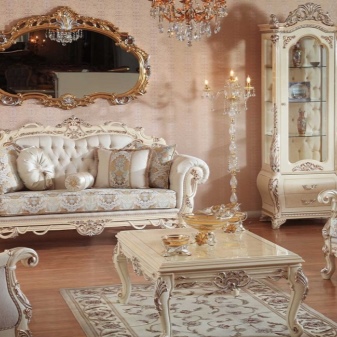
For obvious reasons, today it is more convenient to use not full-fledged candles, but imitations of candle lamps.

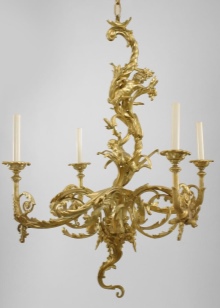

At the same time, the French nobility did not at all strive to settle in a gloomy cave, illuminated only by candles, on the contrary, daylight was also actively used, for the sake of which large window openings were made. Numerous mirrors were designed to enhance the natural lighting effect., which, in combination with light shades of finishing, created the impression of coziness and comfort in the daytime, and also significantly saved the costs of the same candles.
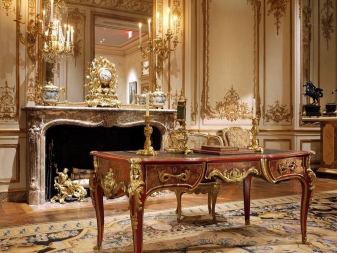
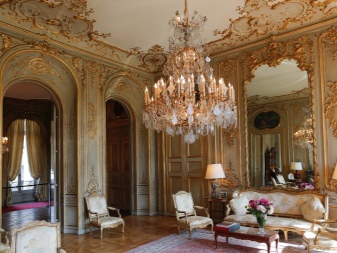

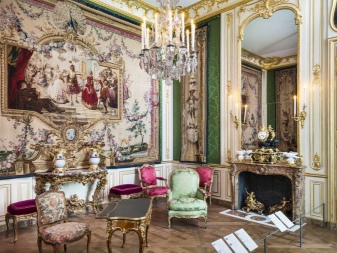
Decor elements
Men may relate to the Rococo style in different ways, but by definition it cannot leave women indifferent, because it is simply the embodiment of women's aesthetics. Rococo is unthinkable without numerous decorative elements - it is not only chic, but also very cozy. An indescribable sense of coziness is achieved thanks to numerous furnishing elements, including figured lamps, carved jewelry boxes, mirrors with designer frames, and stucco figurines. Luxurious wall clocks with gilding or oriental porcelain vases, decorated with floral ornaments, also fit perfectly into the overall concept, moreover, they are its integral components.
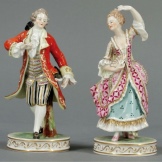
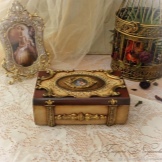


Exquisite tableware is essential. It is appropriate both in the kitchen, where it can be used directly, and in the living room - either on the tea table as a combination of comfort and practicality, or in the sideboard purely for aesthetics. Here, no imitation can be enough - you need a really worthwhile service.
It is worth decorating the room only with real painted porcelain, and if you are to demonstrate the cutlery, then it must be silver. In addition, move away from an overly simplified modern understanding of dishes - remember that there are such specific items as a chocolate bowl or a tureen.
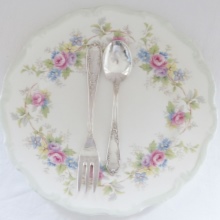
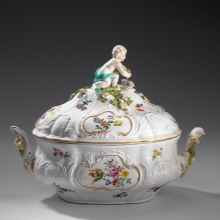
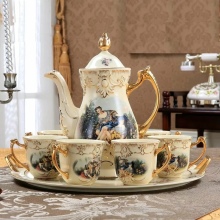
Separately, you should pay attention to the decoration of the walls. In some interiors, painting is performed directly on top of the wall, without inventing any other canvas. However, it is not necessary to make such sacrifices - instead, you can use ordinary framed painting as a decoration, especially since the latter, made of expensive wood and richly covered with bizarre carvings, can in itself become another element of decor.
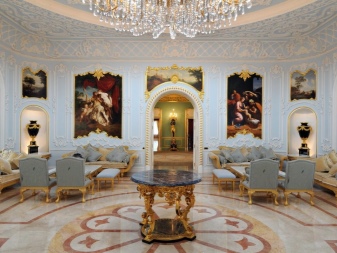

Fabrics played a fundamental role in decorating a room in the Rococo style - they are bright and beautiful; they were historically the first fundamental solution for decorating rooms.
In the same living room or bedroom, solid, expensive curtains are needed, always with lambrequins; in the bedchamber, a luxurious canopy will also not be superfluous, which will make the owner of the bedroom feel like a real rich man.


In the abundance of openwork ornaments and aesthetic decor, it is important not to go too far - luxury should not be overwhelming. That is why the interior is made in light colors - thanks to this, it seems weightless and very aesthetic.Correctly selected components of the Rococo style, with all the solemnity, create the feeling of a light holiday, a pleasant life, and certainly not vice versa.
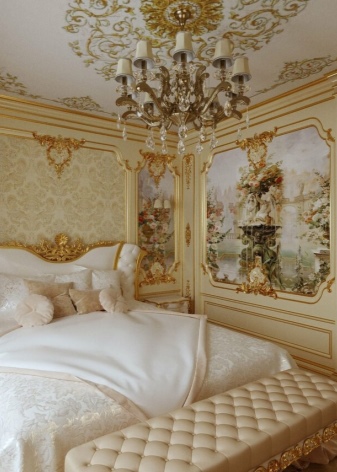
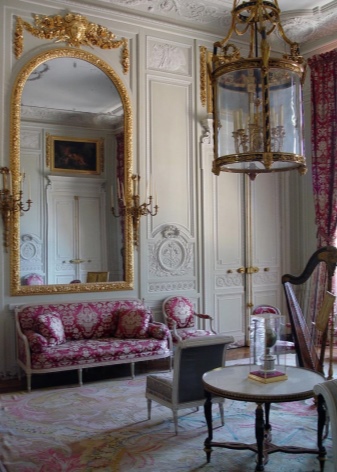

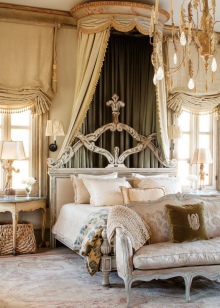
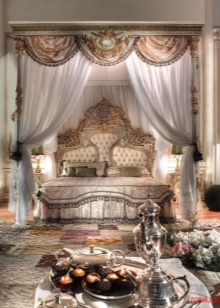
Beautiful examples of interiors
Almost a reference sample of Rococo in the form in which it became popular initially. In the conditions of an ordinary apartment, it is unlikely that it will be possible to duplicate huge windows in the form of semi-arches, but otherwise all the rules are followed, including a real abundance of stucco and carved decorations. The designer did his best to put together a collection of authentic looking furniture with carved legs. Also noteworthy is the consistency of the entire interior in a light green tone.
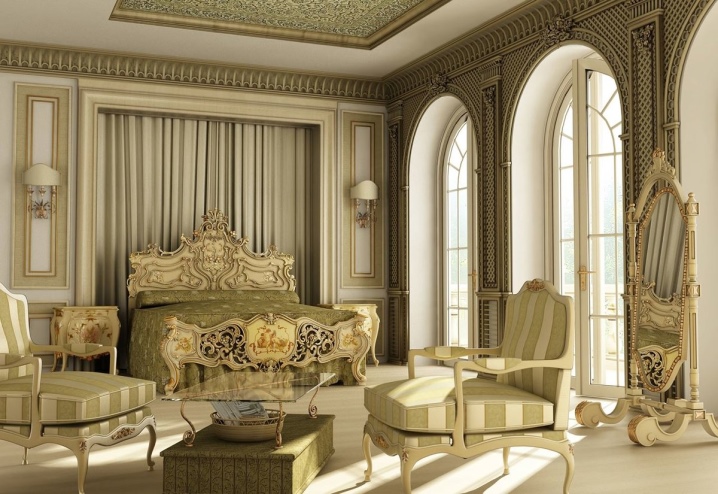
An interior that could be considered a borderline solution between Rococo and its Baroque predecessor. There are quite a few patterns on the walls and ceiling, and this is clearly the limit for this style, especially since the walls and floor, even without patterns, are made quite dark. Nevertheless, the rest of the design principles are also followed - we see a classic living room with a giant candle chandelier, mirrors and a fireplace.
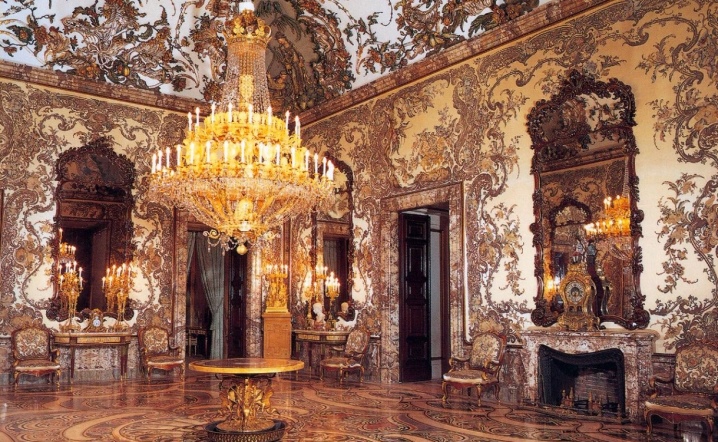
This example is interesting in view of the maximum use of modern finishing materials and, at first glance, relatively low design costs. The walls are covered with wallpaper - albeit stylized, but hardly very expensive, above them there is an ordinary baguette from among the budget. There is a fireplace in the room, but, apparently, it is not used for its intended purpose, and the authenticity is achieved through the furniture.
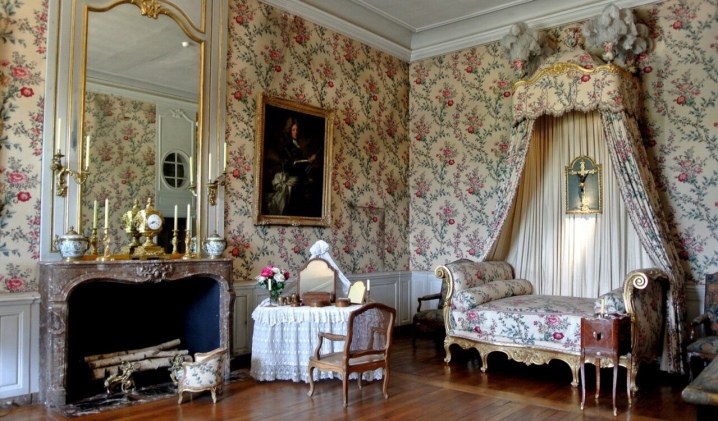
Learn more about the Rococo style in the interior in the following video.













The comment was sent successfully.